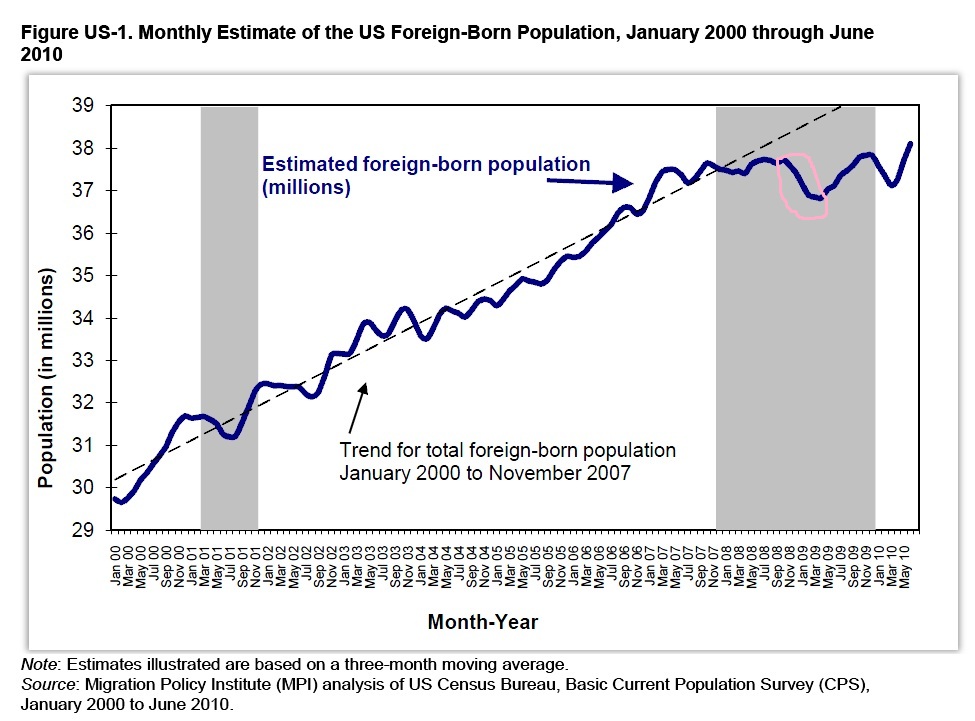Caroline Theoharides and co-authors ask whether "Dubai gets more Filipino migrants when its economy is booming relative to other countries in the world, and whether it pays them more when its economy is booming."
One of their main findings, posted on the World Bank development impact blog, includes the fact that: a 1% increase in GDP at destination leads to 1.5% more migrants, which implies that workers both have an opportunity for substantial wage gains via migration, but also that migrant numbers will be very vulnerable to GDP shocks at destination.
To some degree, this answer seems completely intuitive. In the US, the narrative has been that numbers of foreign-born workers dropped significantly during the recession. However (and Caroline can correct me on this), my impression is that finding empirical evidence to support this story (as with many stories of migration) is a major challenge, especially in the US where many migrants are working illegally.
However, the Migration Policy Institute does have good research on estimates of foreign-born workers using CPS data. And this graph, which comes from a policy paper on the impact of financial collapse in Caroline et al's references, hypothesizes the following numbers of foreign-born workers in the US:
One of their main findings, posted on the World Bank development impact blog, includes the fact that: a 1% increase in GDP at destination leads to 1.5% more migrants, which implies that workers both have an opportunity for substantial wage gains via migration, but also that migrant numbers will be very vulnerable to GDP shocks at destination.
To some degree, this answer seems completely intuitive. In the US, the narrative has been that numbers of foreign-born workers dropped significantly during the recession. However (and Caroline can correct me on this), my impression is that finding empirical evidence to support this story (as with many stories of migration) is a major challenge, especially in the US where many migrants are working illegally.
However, the Migration Policy Institute does have good research on estimates of foreign-born workers using CPS data. And this graph, which comes from a policy paper on the impact of financial collapse in Caroline et al's references, hypothesizes the following numbers of foreign-born workers in the US:
The pink circle is the estimated drop in expected foreign born population during the recession. It seems to me that Caroline et al look hard at the pink circle and use Filipino migration data to find solid evidence in support of the influence of destination-country GDP on that pink circle.

 RSS Feed
RSS Feed